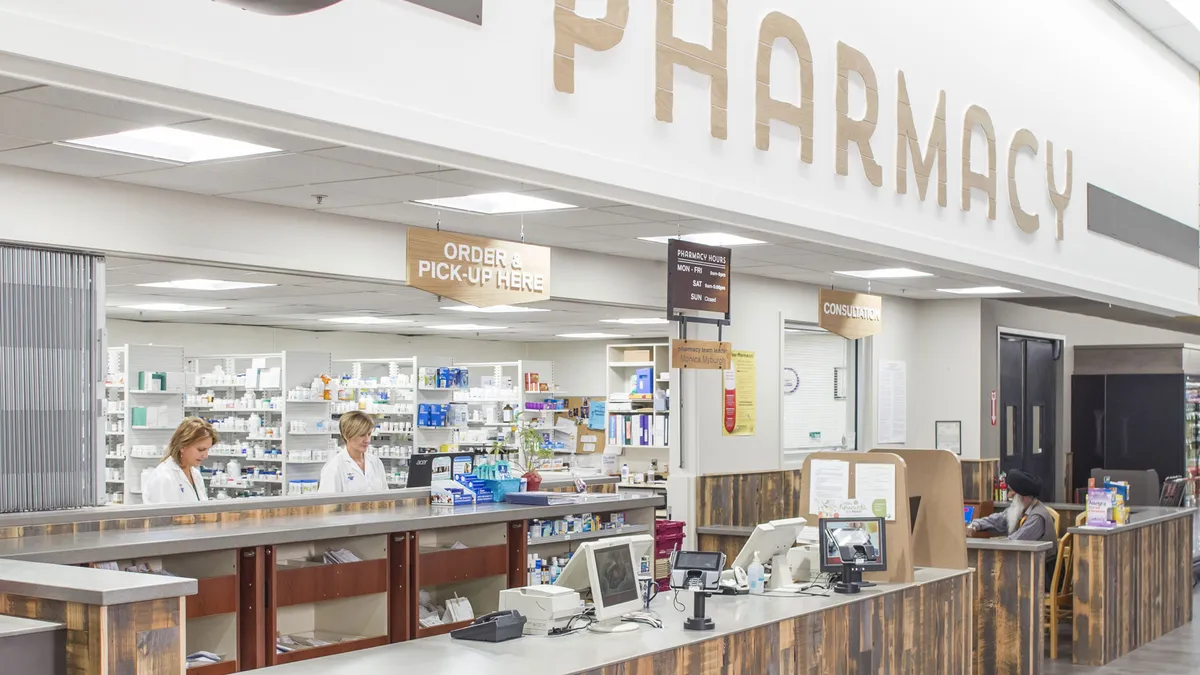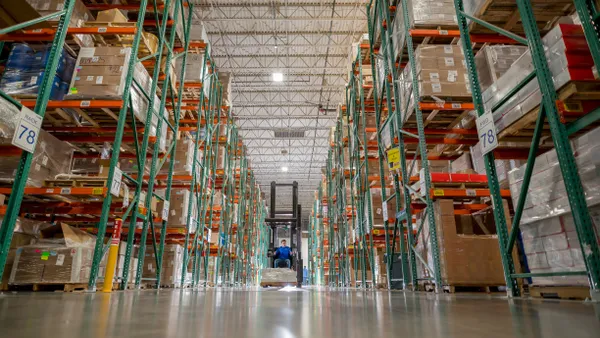Dive Brief:
- The on-time and in-full rate for the pharmaceutical industry has fallen as a result of the coronavirus pandemic and has resulted in companies upping inventory levels to avoid disruptions, according to a survey of more than 350 professionals in different stages of the pharmaceutical industry conducted by IDC. The research was sponsored by TraceLink.
- Before the pandemic, the OTIF rate from suppliers was generally above 80%, according to 98% of respondents. During the pandemic, 18% of respondents say OTIF from suppliers has dipped below 80%. Companies experiencing an OTIF rate from suppliers of 98% or higher has dipped from 74% pre-pandemic to 28%, according to the survey.
- The disruptions have led pharmaceutical supply chains to increase inventory levels in an attempt to avoid shortages, the survey found. "High levels of inventory in the pharmaceutical supply chain have helped blunt and buffer some of the impact of supply and transportation issues, but it had not blunted all of them, and the ability to use stock as a band-aid is not sustainable in the long term," IDC wrote in a report following the survey.
Dive Insight:
The reduction in OTIF can be attributed to a number of different issues throughout the supply chain, according to the report. Respondents noted that decreased demand for non-COVID-19 drugs and a loss of manufacturing capacity were two of the most common disruptions.
Walgreens Boots Alliance Global Chief Financial Officer James Kehoe noted the drop in demand on an earnings call last month, saying the company was experiencing "lower demand for scripts and services, reflecting reduced footfall."
The biggest impact has been at the third-party-logistics level as transportation issues stemming from tight capacity ripple across industries, according to the IDC report.
"Dispensing endpoints have seen the smallest impact, likely a function of high industry inventory levels," the report reads.
The build-up of inventory is not just happening for raw materials. Fewer respondents said they plan to keep less than 30 days of finished inventory on hand in 2021, dropping to 23% of respondents in 2021 from 36% when the survey was taken.
Building up inventory is not typically a company's first choice. Manufacturers and retailers moved to just-in-time models for a reason: Having too much inventory was a waste of money. But the pandemic has highlighted how uncertainties in supply and demand can strain companies, according to Roddy Martin, the chief digital strategist at TraceLink.
"Demand can pop up at any point in the demand side network," Martin said. "But at the same time, the supply network is unreliable. And so you can't even be sure that you're going to have what you need from the supply side."
The increase in inventory also means companies will need to consider storage infrastructure, he said.
"If I now suddenly want to go from holding 30 days worth of vaccines to 100 days worth of vaccines, I'd better have that extra cold storage facility to safely store that product," Martin said.
Respondents to the survey said that upstream visibility was the "most problematic" gap they're experiencing in their supply chain, and 90% said they're working to improve visibility.
IDC concluded that internet-connected technology could step in here to help.
"[The Internet of Things] is less about sensors and sensor technology and more about the continuous data stream of real-time data related to the digital twin of the product flow as it moves through the supply chain that it provides," the report concluded. "In other words, it is increasingly a data and analytics opportunity."
This story was first published in our weekly newsletter, Supply Chain Dive: Operations. Sign up here.














